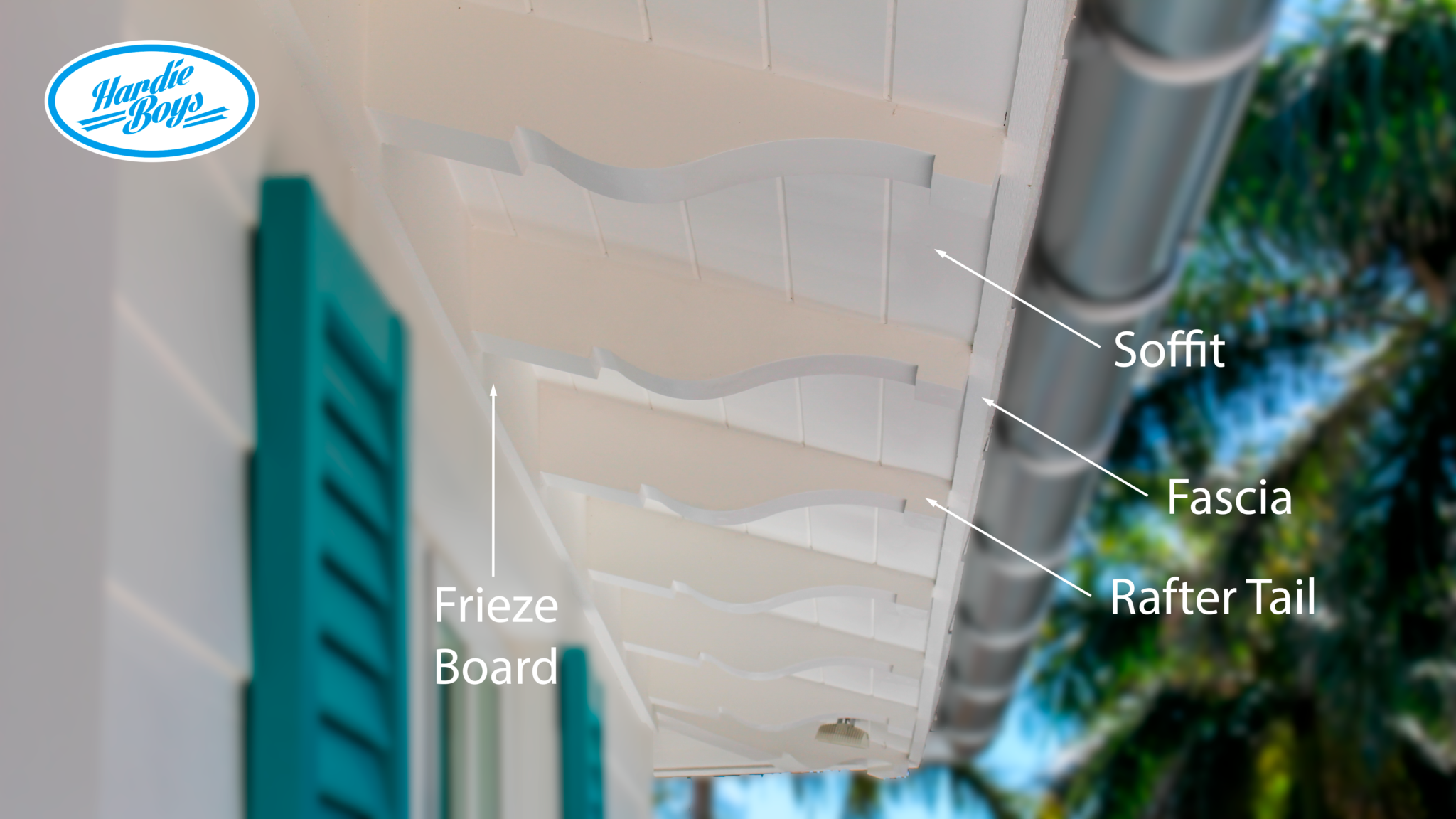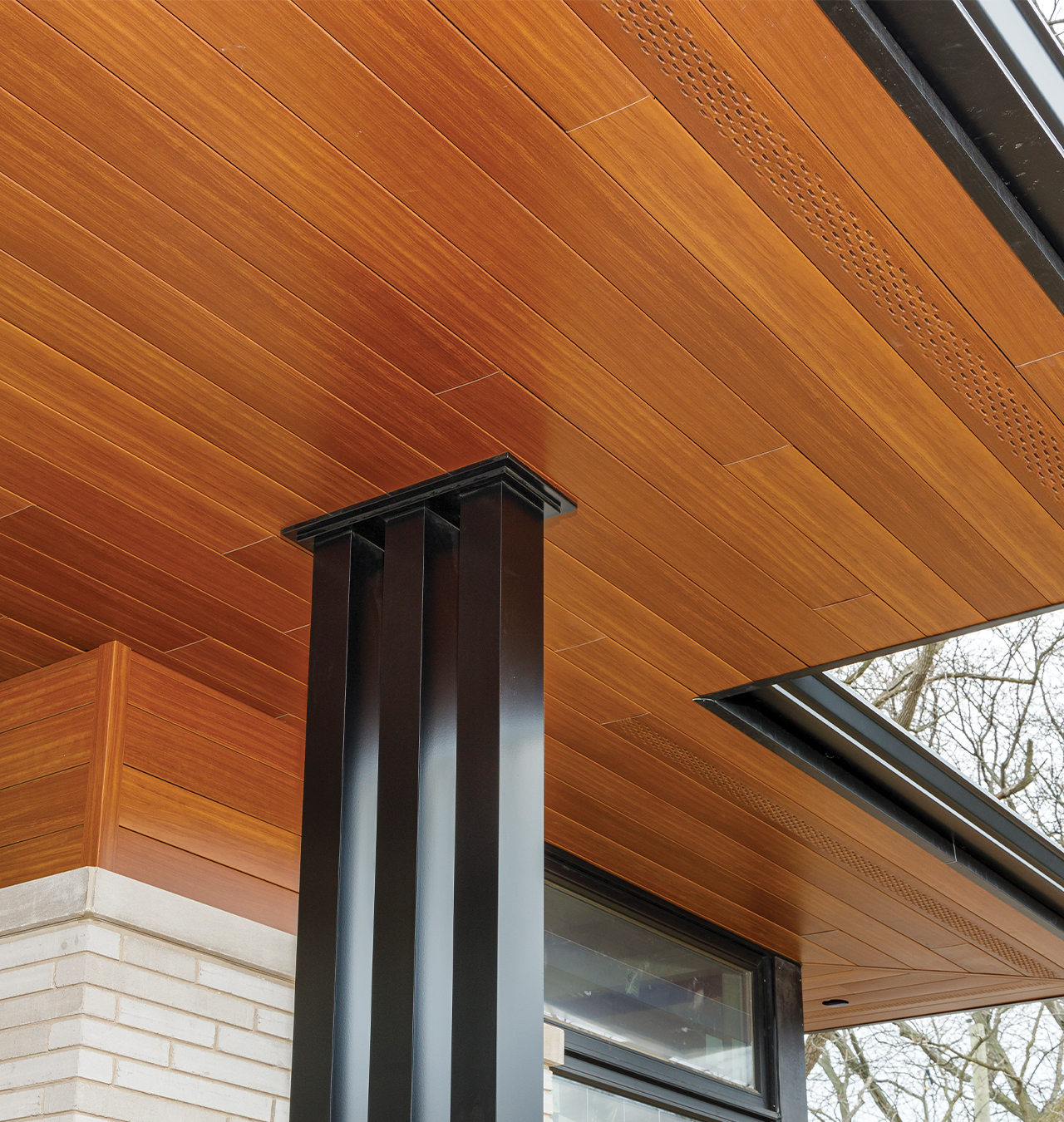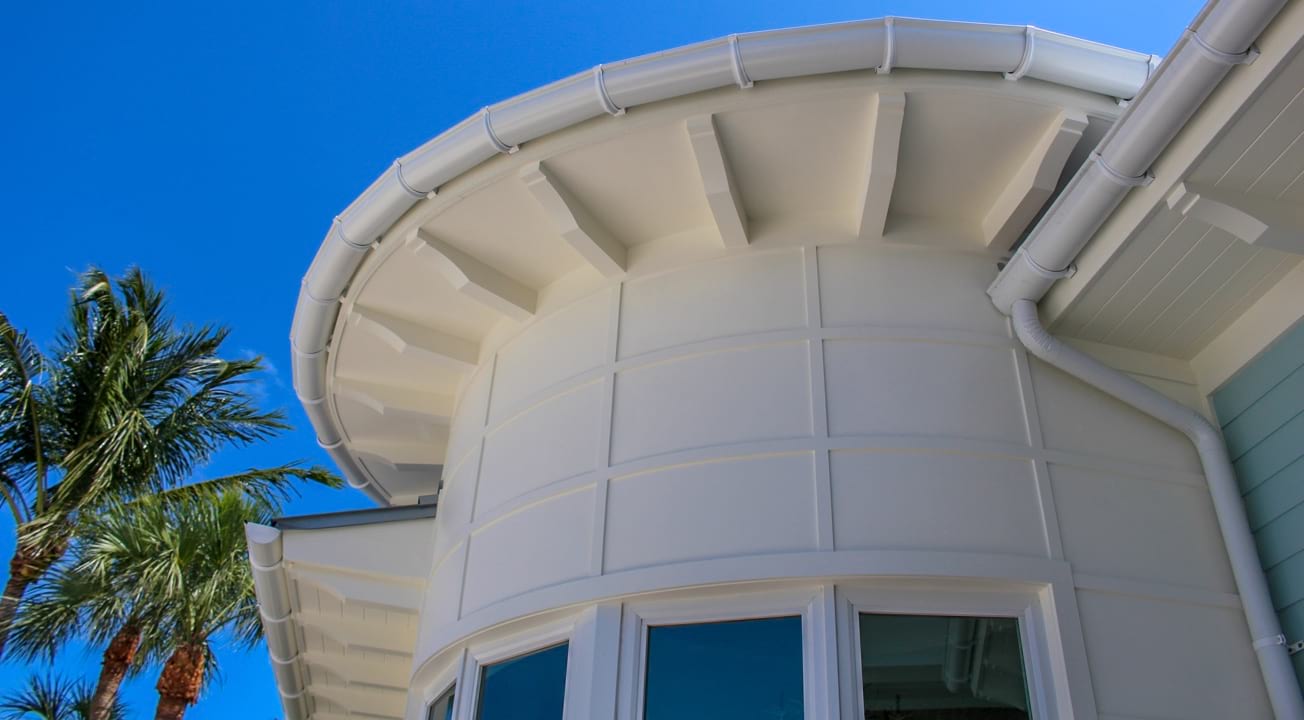How Soffits Protect Your Home
Contributed by: Hardie Boys
If the roof of your house has an overhang, a soffit is essential to protecting your home from the elements. Soffits create a barrier between your home’s internal structure and the outside elements. It can deter pests, keep out drafts, and protect against excess moisture and humidity. A soffit is a practical construction feature, but innovation in the design process means that you can easily install an affordable soffit for a sleek and finished look and protect your home’s exterior.
Here’s everything you need to know about how a soffit can benefit your home, and the right type of soffit to fit your house’s appearance and improve its structural soundness.
What is a Soffit?
A soffit is an important architectural feature that protects your house from the elements while also giving it a sleek, finished look. Soffit sits at the underbelly of your roof, between the wall and the roof’s eaves—the edges of your roof that typically project out beyond the side of a building—where the fascia and gutters tend to be placed. Eaves are a normal part of an architectural structure because they throw water away from the walls of the house. Fascia helps to protect your roof and interior from moisture by preventing water from entering the structure. It runs along the roofline and is often the place on the exterior where the gutter is attached.
If you’re still having a hard time visualizing a soffit, then take a moment to step outside and look up. If you have an overhang or an eave on your roof, beneath it is a piece of material that protects the underside of the roof and the interior of the house from exposure to the elements. It may look like a simple piece of siding sticking out of the front of your house, but that important construction feature is a soffit.

Benefits of a Soffit
Though this exterior feature is often overlooked and underrated, soffits are a must-have for protecting the interior of your house from external elements. When you don’t have a soffit in place, cold air, moisture, rain, and pests can easily get inside the structure of your house. You don’t have to be in construction to know that those can be big problems.
Here’s how a soffit can protect your home and save you time and money on maintenance over the long run:
- Weatherproofing: Soffits close off areas where wind can otherwise force moisture from rainfall into the interior structure of your house, keeping the materials from deteriorating.
- Ventilation: Timber-style homes can become damaged by improper ventilation. Trapped humid air and moisture causes molding and lowers air quality in your home. Soffits promote airflow to prevent moisture accumulation.
- Pest control: Pests in your home or building materials can cause unnecessary headaches. The same way a soffit keeps the elements out of your home, it keeps pests from entering, too.
- Maintenance: Soffits will save you time and money on maintenance long-term. Choose a durable cellular PVC material that is designed to withstand the corrosiveness of the elements, and you can rest assured that your soffit will stand the test of time.
The versatility of design and custom features make a soffit a complementary finishing feature to up the aesthetic appeal of your home. Choose between a number of tones and styles to suit your personal taste and maintain the warmth and welcome of your home.
Types of Soffit
While traditionally soffit was made from materials like aluminum and wood, today’s soffits are mostly made from vinyl or PVC for durability. PVC soffits are easy to install, low maintenance, and long lasting.

If you like the look of natural wood for your exterior, durable PVC and vinyl alternatives can be designed to imitate wood perfectly. Royal Building Products’ Cedar Renditions 6” aluminum soffit is an award-winning soffit option that has the curb appeal of wood without any of the maintenance headaches. Hardie Boys durable PVC and Vinyl are also options.
Soffit can also be vented or non-vented to allow for maximum roof ventilation. Depending on the size of your eaves and the amount of attic space you need to ventilate, you may opt for a ventilated soffit.

Installing a soffit system on your home has never been easier, and never have there been so many great soffit options to choose from. By going for a long-lasting, durable PVC or vinyl soffit, you’ll be making an investment in your home that will keep it in good shape for many years to come.




